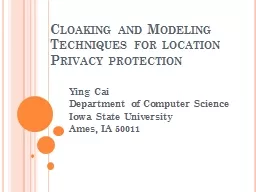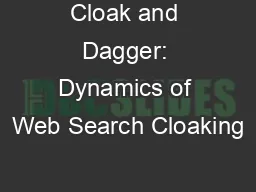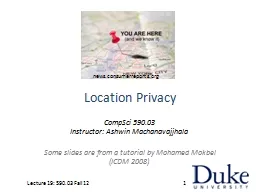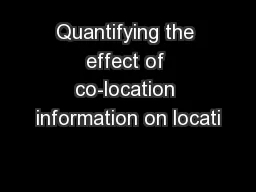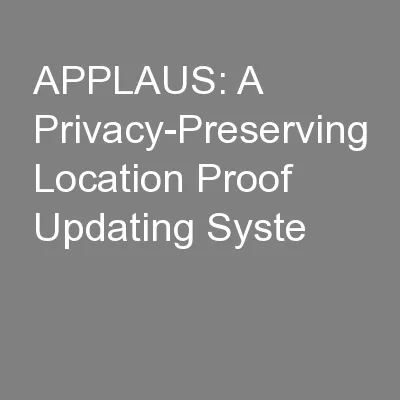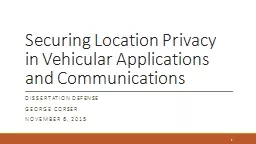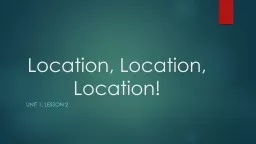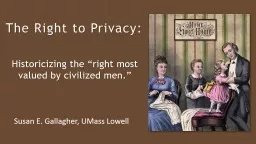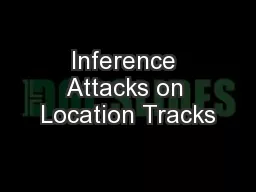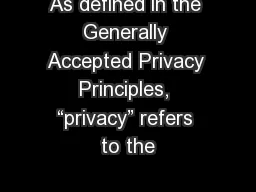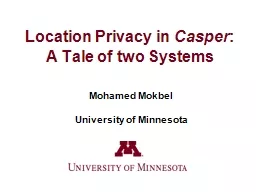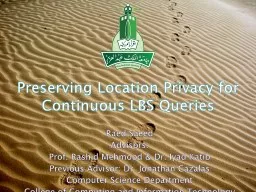PPT-Cloaking and Modeling Techniques for location Privacy prote
Author : giovanna-bartolotta | Published Date : 2016-03-03
Ying Cai Department of Computer Science Iowa State University Ames IA 50011 Locationbased Services Risks Associated with LBS Exposure of service uses Location privacy
Presentation Embed Code
Download Presentation
Download Presentation The PPT/PDF document "Cloaking and Modeling Techniques for loc..." is the property of its rightful owner. Permission is granted to download and print the materials on this website for personal, non-commercial use only, and to display it on your personal computer provided you do not modify the materials and that you retain all copyright notices contained in the materials. By downloading content from our website, you accept the terms of this agreement.
Cloaking and Modeling Techniques for location Privacy prote: Transcript
Download Rules Of Document
"Cloaking and Modeling Techniques for location Privacy prote"The content belongs to its owner. You may download and print it for personal use, without modification, and keep all copyright notices. By downloading, you agree to these terms.
Related Documents

